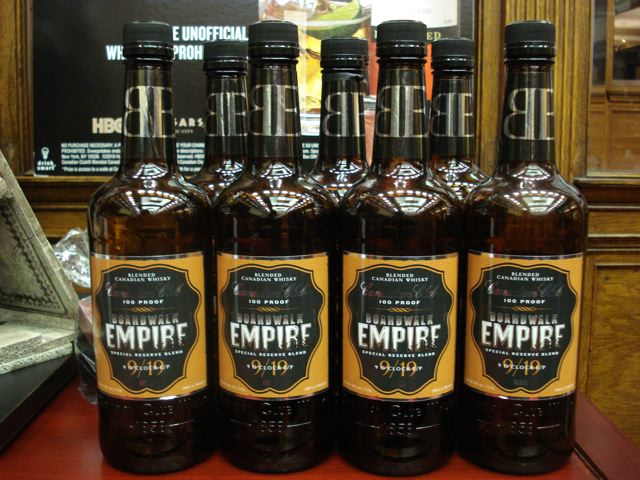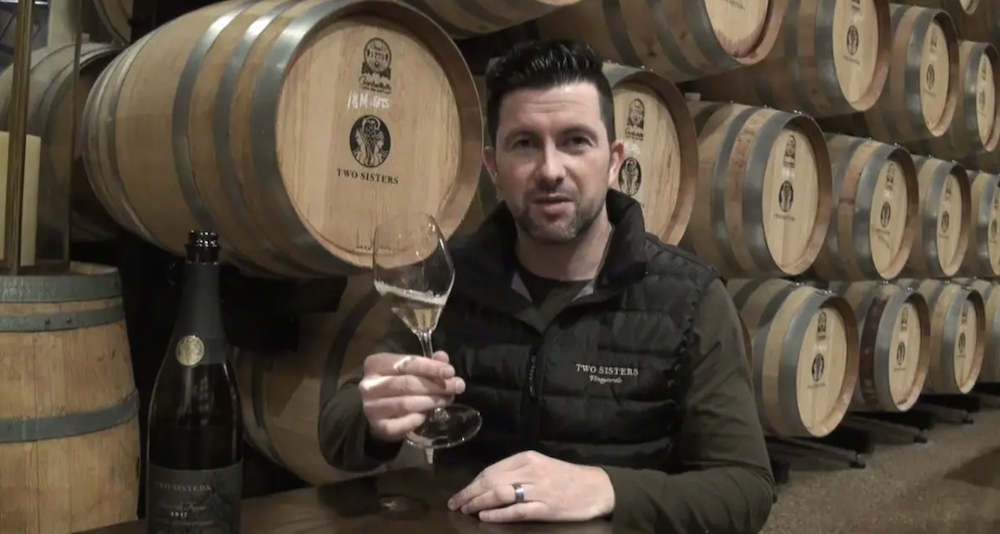by Alison Kent
Who doesn’t like a story rich in history, intrigue and illegal activity?
Certainly not I. So when the opportunity recently arose to visit and tour the Canadian Club Brand Center in Walkerville, Ontario, I jumped.
Where is Walkerville, you might ask? Named for Hiram Walker, father of Canadian Club, Walkerville is located on the edge of the Detroit River in essentially what is now the city of Windsor. It precedes Windsor though — it even precedes the birth of Canada as a nation, as Walker, an entrepreneurial American, strategically set-up operations here in the 1850’s. Temperance movements were active even by this time, and he had the foresight to build on the opposite side of the river where he could continue to legally operate his distillery, come what may. Decades later in the U.S., ‘come what may’ became better known as the Prohibition era, which in turn became one of the busiest and most profitable times in the history of the distillery.
In the beginning, Walker cleared his newly acquired land, built the distillery, grew grain, milled flour and raised livestock that was fed spent mash from the distillery. He built homes for his workers, as well as shops, schools, a hotel and a church. Walkerville had its own currency in which workers were paid, which was promptly returned to the astute Walker in the form of lease payments and the like. No doubt some of these Walker-bucks also went toward the purchase of a bottle of whisky or two. By the late 1800’s just about all of the 600 people living in Walkerville called Hiram Walker their employer. If this wasn’t enterprising enough, he counted Thomas Edison and Henry Ford among his friends, with Walker’s head office being one of the first to be wired for electricity. And he was instrumental in the growth of Walkerville Wagon Works, which later became the Ford Automotive Plant.
The Canadian Club Brand Center (spelled with an American ‘er’) is still in use today, and if you find yourself in the area, it’s worth taking some time to stop by and take a guided tour. This ancestral home and heritage building is part art gallery, with its Group of Seven collection on display in one of its many well-appointed rooms, and part museum, with ledger books and cooperage tools on display. Downstairs, the Canadian Club archive room houses row-upon-row of CC bottles, both genuine and counterfeit, gathered through the years (the room itself used to house a luxurious swimming pool, which is a whole other story unto itself). Bottles, minus their labels, are occasionally dredged from the Detroit River to this day.
In the dimly lit speakeasy hidden in the basement, one can envision Al Capone’s rum-runners wheeling, dealing, and apparently disagreeing, based on the bullet hole still visible in the brick wall and as a result of some Prohibition era discussion gone awry (a-rye?). Also in the basement is the entrance to a hidden tunnel, where whisky shipments were illegally transported via horse and buggy under the apparently quite shallow Detroit River and over into to the U.S.
More historical facts and trivia: The term ‘bootlegger’ stems from curved-shaped CC bottles which were much more comfortable to slip into a worker’s boot than a round one. And then there was a certain sea captain and rum smuggler named Bill McCoy who demanded clean, quality Canadian Club whisky be supplied to speakeasies during The Roaring Twenties — a time when adulterated ‘whisky’ was wreaking havoc on unsuspecting folks. From that point forward, all things authentic came to be known as ‘the real McCoy’.
In the mid-to-late 1800’s, CC first became known as the whisky of choice in exclusive Canadian and American clubs, which is how the name ‘club whisky’ came to be. The addition of ‘Canadian’ to the name came about in 1889 as a way of distinguishing it from other types of whisky, such as Kentucky or Irish. Queen Victoria drank CC. James Bond drank CC, albeit fictitiously. More recently, the brand has been enjoying a resurgence in popularity after receiving some serious TV airtime featured in both Mad Men and, my personal fave, Boardwalk Empire.
Canadian Club has run many innovative promotional campaigns over the years, including ‘Damn Right Your Dad Drank It’ and the annual ‘Movember’ charity event. But before both of these there was the Hide-A-Case campaign, which first began in 1967. Over the years, cases of CC have been strategically hidden the world over, and while most have since been discovered, a few have not, including one in Tonga which was hidden back in 1991.

CC Brand Center Ambassadors, Dan Tullio and Tish Harcus, lead the contestants into a ‘Spirited Dinner’ of CC-based dishes.
Hence our gathering on this day, to toast four Canadian and four American contestants and wish them ‘bon voyage’ as they were whisked off to this remote island in the South Pacific in search of the missing case. While there, Kevin Brauch, host of the Thirsty Traveler, guided teams through a series of games and challenges, leading to the elimination of one team and then narrowing to one of the remaining members.
Was the case of Canadian Club in Tonga discovered? I’m not one to spoil the surprise, but if you’re curious, click here…
Mix a classic prohibition cocktail to enjoy while reading more about The Roaring 20’s.
CC® High Roller
Courtesy of Canadian Club
In a tall glass filled with ice add:
1 part Canadian Club® Classic 12
2 parts ginger ale
Add a squeeze of lime
Garnish with lime wedge.
 Alison Kent is a food & travel writer, recipe developer and Cookbook author. Follow Alison at twitter.com/alicatchef.
Alison Kent is a food & travel writer, recipe developer and Cookbook author. Follow Alison at twitter.com/alicatchef.
















I would like the mailing address for Canadian Club. (Marketing) Many Thanks,
Gordon L. Bennett
Captglbcd@aol.com
Found an old sign 1906 walkerville the bridge company ?interested